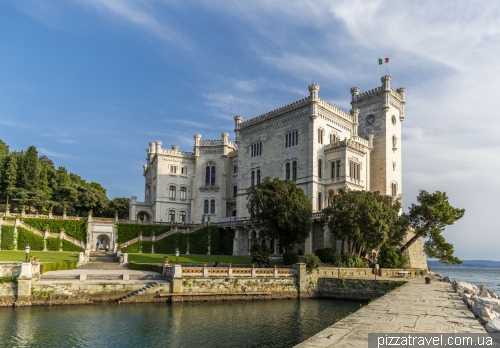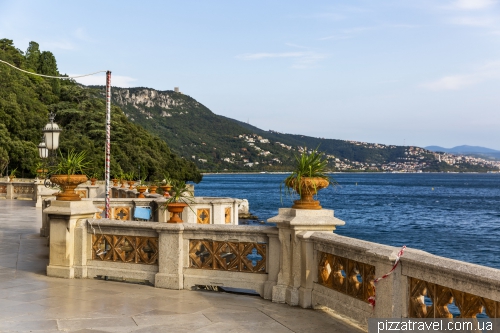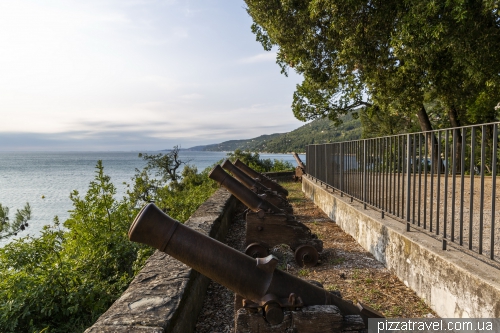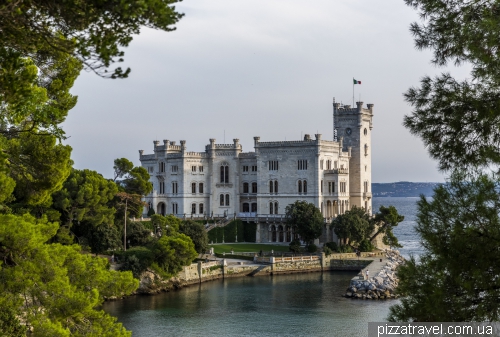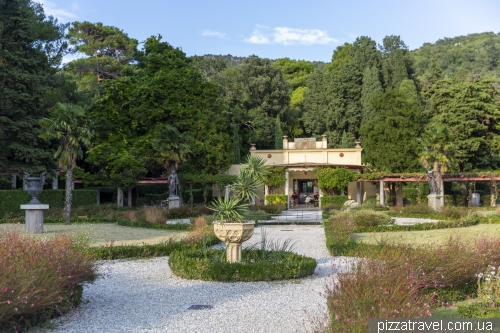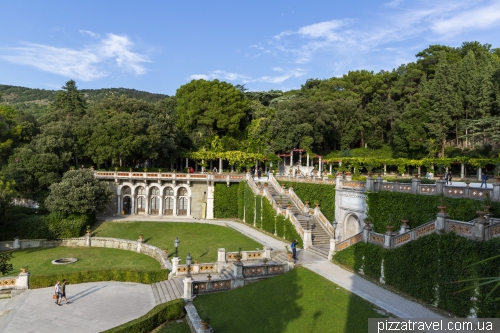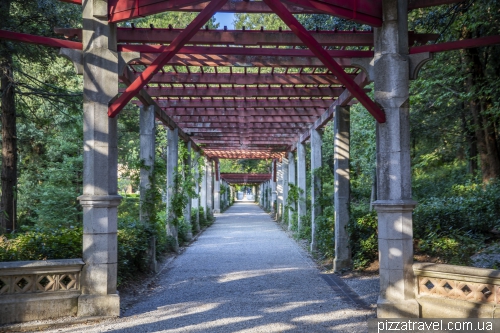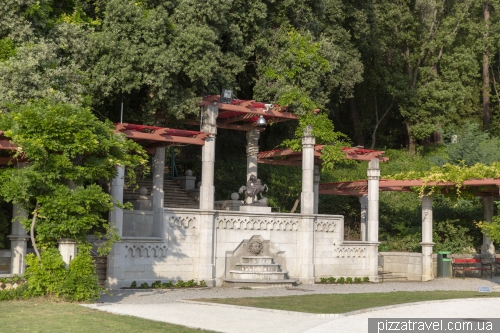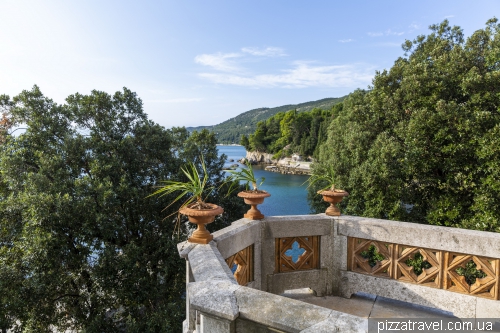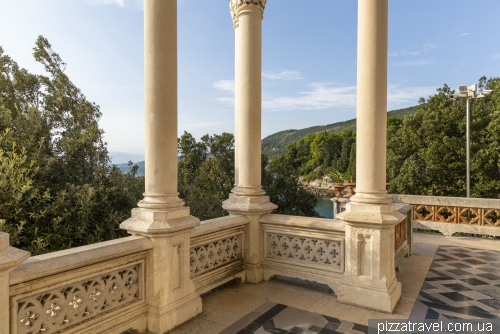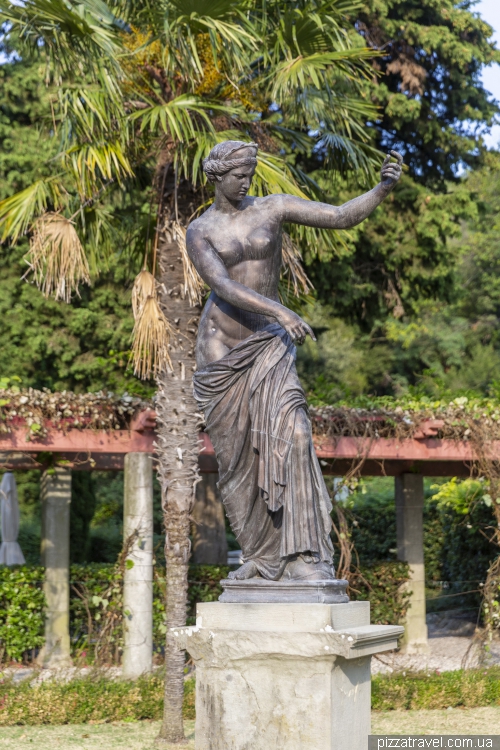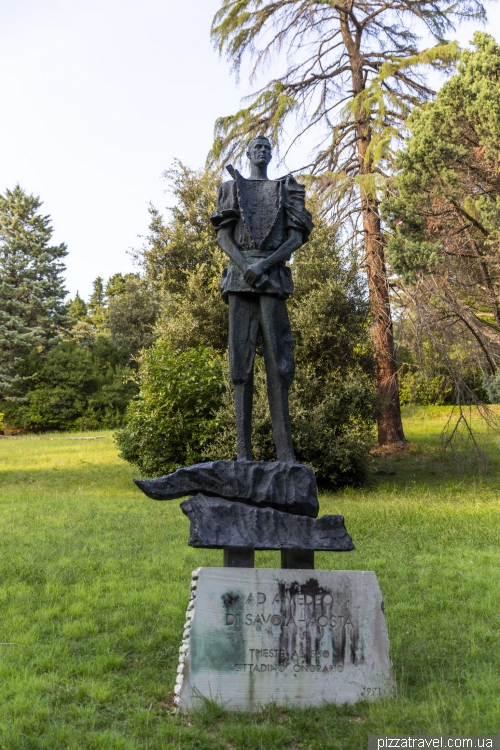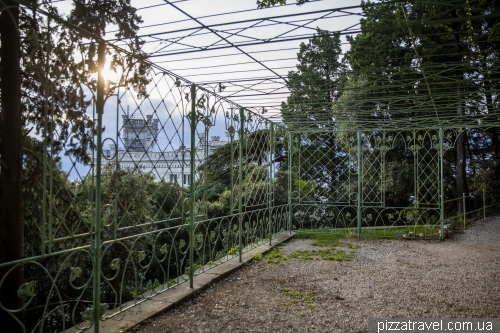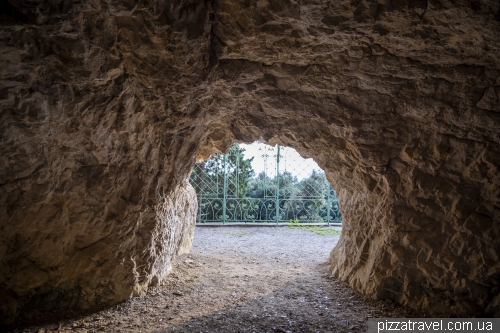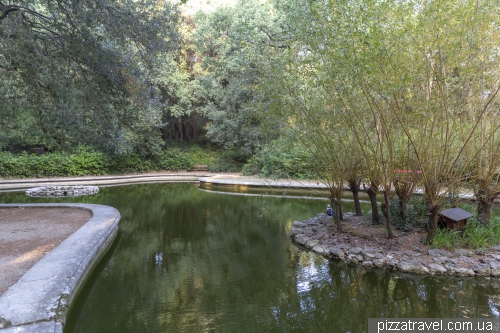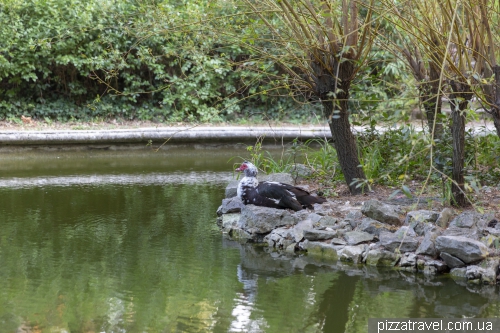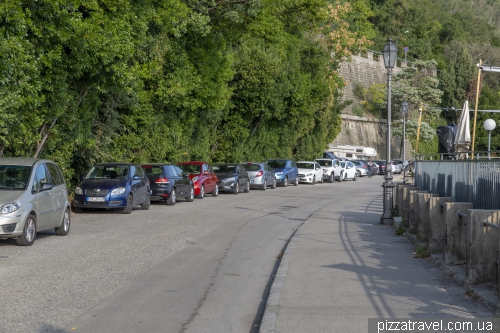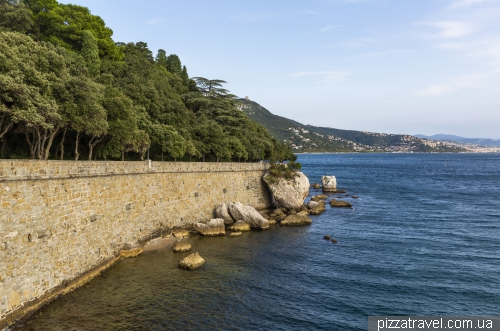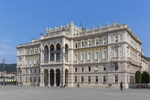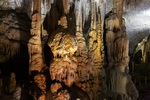The location on the seashore gives a special charm to the structure.
After the Archduke left for Mexico as governor, the castle remained the residence of the Habsburgs, one of Europe’s most powerful royal dynasties. After World War I, the Italian government transferred it to the Duke of Amedeo Aosta. During and after World War II, the castle belonged to a variety of armies: Germans, British, Americans, and even New Zealanders.
The castle can be visited inside, though we arrived in the evening and it was already closed, so we went for a walk in the park. The interiors are interesting because they are recreated from photographs ordered by the Archduke. Most of the items returned from different parts of Europe.
The park, in English and Southern styles, was opened to the public in 1955.
The park, spread over an area of 22 hectares, is more like a botanical garden. The Archduke filled it with the rarest plants: Lebanese cedar, sequoias, ginkgo biloba.
Castelletto Castle, a small villa in which the Archduke lived before the construction of Miramare Castle.
The park is quite large and if you climb a hill, you can find many semi-abandoned corners.
Parking in the season will be difficult, in any case, you have to walk on foot for about a kilometer.
The sea area between the park and the castle is a biosphere reserve.
Opening hours of the castle and the park can be found at the bottom of the official page.
Getting there: Free parking N 45 42.067 E 13 43.322. Train station Miramare (timetable from Trieste). In summer, by boat from Trieste to Grignano (timetable). Buses 6 or 36 from the train station in Trieste to Viale Miramare (timetable). From the bus stop to the castle is about 1300 meters along the sea.
